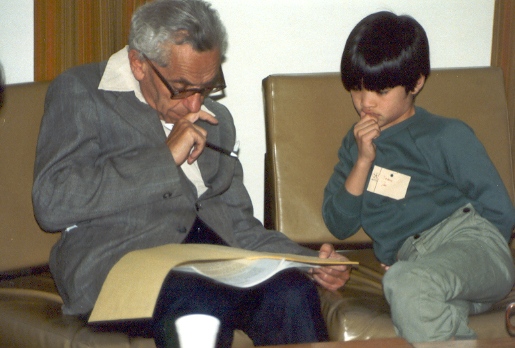The Scientific Cost of Immigrant Quotas
 In the 1920s immigration to the United States was restricted with quotas which were designed to reduce the number of immigrants from Italy and Eastern Europe, then considered to be low-quality immigrants. One unintended consequence was that the number of immigrant scientists from these areas also declined. The awesome Petra Moser and Schmuel San have an excellent new paper documenting the cost on US innovation and patenting.
In the 1920s immigration to the United States was restricted with quotas which were designed to reduce the number of immigrants from Italy and Eastern Europe, then considered to be low-quality immigrants. One unintended consequence was that the number of immigrant scientists from these areas also declined. The awesome Petra Moser and Schmuel San have an excellent new paper documenting the cost on US innovation and patenting.
Naturalization data indicate a dramatic decline in the arrival of new ESE-born scientists after the quotas. Until 1924, arrivals of new ESE-born immigrant scientists were comparable to arrivals from Northern and Western Europe (WNE), who were subject to comparable pull and push factors of migration.1 After the quotas, arrivals of ESE-born scientists decline significantly while arrivals from Northern and Western Europe continue to increase. Combining data on naturalizations with information on scientists’ university education and career histories, we estimate that 1,165 ESE-born scientists were lost to US science under the quota system. At an annual level, this implies a loss of 38 scientists per year, equivalent to eliminating the entire physics department of a major university each year between 1925 and 1955. For the physical sciences alone, an estimated 553 ESE-born scientists were lost to US science.
To estimate the effects of changes in immigration on US inventions, we compare changes in patenting per year after 1924 in the pre-quota fields of ESE-born US scientists with changes in patenting in other research fields in which US scientists were active inventors before the quotas. This identification strategy allows us to control for changes in invention by US scientists across fields, for example, as a result of changes in research funding. Year fixed effects further control for changes in patenting over time that are shared across fields. Field fixed effects control for variation in the intensity of patenting across fields, e.g., between basic and applied research.
Baseline estimates reveal a large and persistent decline in invention by US scientists in the pre-quota fields of ESE-born scientists. After the quotas, US scientists produced 68 percent fewer additional patents in the pre-quota fields of ESE-born scientists compared with the prequota fields of other US scientists. Time-varying effects show a large decline in invention by US scientists in the 1930s, which persisted into the 1960s. Importantly, these estimates show no preexisting differences in patenting for ESE and other fields before the quotas.
Canada which did not implement quotas did not see a similar decline. One interesting case study which is quite astounding in its way:
A case study of co-authorships for the prolific Hungarian-born mathematician Paul Erdős illustrates how restrictions on immigration reduced collaborations between ESE-born scientists and US scientists. Erdős moved to the United States as a post-doctoral fellow at Princeton, and became a professor at Notre Dame, travelling and collaborating with many US scientists. As a Hungarian citizen, however, Erdős was denied a re-entry visa by the US immigration services in1954, and not granted re-entry until 1963. To examine how these denials affected Erdős’ collaborations with US scientists, we collect the location of Erdős top 100 coauthors at the time of their first collaboration. These data show that Erdős’ collaborations shifted away from the United States when he was denied re-entry. Between 1954 and 1963, 24 percent of Erdős’ new co-authors were US scientists, compared with 60 percent until 1954. These patterns are confirmed in a broader analysis of patents by co-authors and co-authors of co-authors of ESEborn scientists, which indicates a 26 percent decline in invention by scientists who were directly or indirectly influenced by ESE-born scholars.
As you might suspect from the Erdos example, scientists in the US became less not more productive without the benefits of cooperation with Eastern European scientists.
Some of the scientists denied entry to the US in the 1920s went to Israel instead and innovated there so their genius was not entirely lost to the world.
Photo: Paul Erdos with Terrence Tao. Attribution, either Billy or Grace Tao, CC BY-SA 2.0 <https://creativecommons.org/licenses/by-sa/2.0>, via Wikimedia Commons